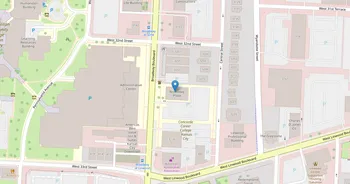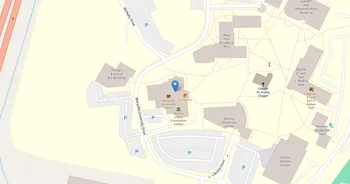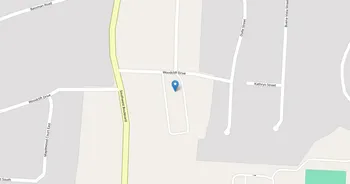Logan University : Overview, Courses, Scholarships & Rankings
About Logan University
Set in suburban Chesterfield just outside St. Louis, Logan University is known for immersive health sciences rooted in evidence-based teaching and close faculty mentorship. Coursework leans practical, with plenty of lab time and case discussion that build clinical judgment. The vibe is focused but friendly; students tend to know each other by name, and they take learning seriously without losing their sense of balance.
Facilities include an on-campus health center, modern labs, a well-stocked library, and bright study nooks that actually get used. Services span advising, tutoring, career guidance, and wellness support. Student life revolves around health clubs, intramurals, and community outreach, with trails, parks, and coffee spots nearby. Career prep runs through clinical rotations and internships with regional providers, plus a network that opens doors in clinics, rehab settings, and community wellness. A few meaningful traditions mark the step into clinical training, and they stick with people.
Key Institutional Details
Contact & Profile
Academic & Institutional
Academic Programs & Fields of Study
Logan University offers 8 degree programs across 4 major academic fields, graduating approximately 537 students annually. The most popular fields by graduate volume are Health (5 programs, 340 graduates), Kinesiology (1 programs, 112 graduates), Biological Sciences (1 programs, 62 graduates) and Interdisciplinary (1 programs, 23 graduates). Explore program details, award levels, and graduate demographics below.
Health (5 programs, 340 graduates)
Healthcare Professions, Medical Sciences and Clinical Practice
| Program Name | Graduates | Gender Distribution | Award Levels | CIP Code |
|---|---|---|---|---|
| Chiropractic Medicine | 237 |
|
Doctorate (P)
|
51.0101 |
| Clinical Nutrition | 55 |
|
Master's
|
51.3102 |
| Medical Informatics | 21 |
|
Master's
|
51.2706 |
| Dietetics | 19 |
|
Master's
|
51.3101 |
| Health Professions Education | 8 |
|
Doctorate (R)
|
51.3202 |
Kinesiology (1 programs, 112 graduates)
Exercise Science, Sports Medicine and Physical Recreation
| Program Name | Graduates | Gender Distribution | Award Levels | CIP Code |
|---|---|---|---|---|
| Exercise Science and Kinesiology | 112 |
|
Master's
|
31.0505 |
Biological Sciences (1 programs, 62 graduates)
Life Sciences, Biotechnology and Biomedical Research
| Program Name | Graduates | Gender Distribution | Award Levels | CIP Code |
|---|---|---|---|---|
| Biology and Biological Sciences | 62 |
|
Bachelor's
|
26.0101 |
Interdisciplinary (1 programs, 23 graduates)
Cross-Disciplinary Studies and Integrated Research Programs
| Program Name | Graduates | Gender Distribution | Award Levels | CIP Code |
|---|---|---|---|---|
| Natural Sciences | 23 |
|
Bachelor's
|
30.1801 |
Admission Requirements & Test Scores
Comprehensive overview of admission criteria, standardized test score ranges, and application requirements for prospective students at Logan University.
Application Requirements
Data based on IPEDS for 2022-2023 academic year. Test score ranges represent the middle 50% of admitted students (25th-75th percentile). Requirements may vary by program.
Tuition, Fees & Estimated Costs
Overview of tuition rates, housing, and other annual education expenses for undergraduate and graduate students
Financial Aid & Student Support
Summary of scholarships, grants, student loans, and financial aid statistics for undergraduate students
Student Success Metrics
Graduation rates and post-graduation earnings to help assess student outcomes and long-term value of education.
Loan Burden & Repayment Outcomes
Breakdown of loan repayment rates and student debt levels by income and dependency status.
Frequently Asked Questions
Find answers to the most common questions about Logan University
How much does it cost to attend Logan University?
The annual tuition at Logan University is $9,000 for in-state students. When including room and board, books, and other expenses, the total estimated cost is approximately $10,500 for in-state students. Additional costs include room and board $11,848 (off-campus) and books and supplies $1,500.
Data based on IPEDS program completions for 2022-2023 academic year. Tuition and cost estimates are approximate and may not include all fees, personal expenses, or transportation costs.
What academic programs and degree levels does Logan University offer?
Logan University offers 8 academic programs across 4 major fields of study, with available degree levels: Bachelor's, Master's, Doctorate (Research), Doctorate (Professional).
Most popular program areas include:
- Healthcare Professions, Medical Sciences and Clinical Practice (5 programs)
- Exercise Science, Sports Medicine and Physical Recreation (1 programs)
- Life Sciences, Biotechnology and Biomedical Research (1 programs)
- Cross-Disciplinary Studies and Integrated Research Programs (1 programs)
Data based on IPEDS program completions for 2023-2024 academic year. Numbers reflect programs where students graduated, not all offered programs.
What is the acceptance rate for Logan University?
Logan University has an 90% acceptance rate and a 72.2% yield rate, making it moderately selective.
Admission statistics breakdown:
- Total applicants: 20
- Students admitted: 18
- Students enrolled: 13
Data based on IPEDS for 2022-2023 academic year. Admission statistics may vary by program and application cycle.
What financial aid and scholarships are available at Logan University?
Logan University provides financial aid to 3% of first-time, full-time students, with average grants of $9,892 and average loans of $6,750.
Average financial aid amounts by type:
- Pell grants: $9,167
- State/Local grants: $1,563
- Institutional grants: $6,000
- Federal loans: $6,750
The university supports 5 students with grants and 8 students with loans annually.
Data based on IPEDS for 2022-2023 academic year. Financial aid amounts and percentages may vary by program, enrollment status, and individual circumstances.
What is the average salary for Logan University graduates?
Logan University graduates earn a median salary of $42,378 after 6 years and $55,838 after 10 years.
The salary range 10 years after graduation spans from $24,680 (25th percentile) to $89,221 (75th percentile).
Data based on IPEDS for 2022-2023 academic year. Salary data reflects graduates who received federal financial aid (approximately 60% of all graduates). Actual earnings may vary significantly based on program, location, and individual circumstances.
Related Universities




Found something useful? Help others discover it too! Share with friends, on social media, or save for later - every share helps someone find the information they need.